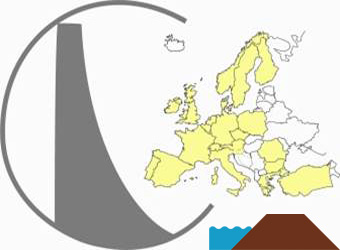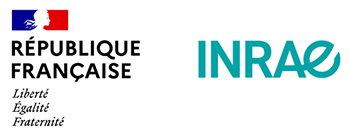During FLOODrisk 2016, over 200 papers were presented, covering as many as 24 topics. With such a wealth of papers, only some brief highlights can be given. An overview is given below. The six main topics are used as a starting point, but a fair number of papers actually covers more than one topic.
Flood hazard
This topic included a large number of papers on hazard modelling and flood defence performance, as well as some papers on flood probability and (mainly coast-related) climate change.
Many flood probability papers are also of interest to the dam community as they propose solutions for common problems related to short time series (paleo-flood analysis, rainfall generators like SHYREG) and/or fast-response catchments.
The hazard modelling topic included a large number of papers on hydrological and hydraulic modelling, but also a paper on a French historical flood database.
The flood defence performance papers discussed issues like safety assessment tools, revetment investigations, internal erosion, breach modelling, uncertainties and temporary flood defences. The topic also included an interesting international comparison of risk analysis approaches for levees.
Characterizing consequences
This topic included various types of consequences, critical infrastructure and loss-of-life modelling.
Ironically, water supply may be one of the first essential things to be affected during floods. Flood-threats to critical infrastructure are now gradually getting more attention, amongst others through the EU-INTACT project. Critical infrastructure failure is in fact a type of cascading failure. Multiple failures of dams and levees in a basin is another type of cascading failure. Vanicek described this in a ‘domino-effect’ paper; similar cascading effects were presented for the French floods of June 2016.
The loss-of-life topic included several interesting papers, including a state-of-the-art overview of Jonkman that might also serve as input for an ICOLD loss-of-life guidance under development.
Many papers were also published on the estimation of physical, social and environmental consequences, and more specifically on flood losses. This is still a challenging issue with many methodological questions, so sharing good practice makes sense here.
Characterizing flood risk
This topic included vulnerability & resilience, risk perception & communication, hazard & risk mapping and risk evaluation & assessment. A good proportion of the papers was devoted to vulnerability and resilience, including several case studies. Case studies were also a common issue in the papers on mapping. In addition, there was an interesting paper on quick evaluation of inundation levels at various return period extreme events, using river discharges at these return periods, and a single inundation map for a given return period.
The topic of risk evaluation also included some case studies, but also two interesting papers on the role of uncertainties in dam failure consequence evaluation, and on the validation of probabilistic flood evaluations.
The topic of risk perception included two interesting papers on the role of flood memories.
Risk reduction and management
This covered a range of topics like prevention, non-structural measures, maintenance, public involvement and learning from past events.
Papers on the topic of past events demonstrated key lessons on flood consequences, the element of surprise in each flood (especially flash floods), and how policy responds to flood events.
Best practices on public engagement were summarized in the five papers on this topic.
The topic of maintenance included risk-based asset management, smart monitoring (with drones and within levees) as well as innovations for dams and levees like lime-treated soil.
The topic of non-structural measures included a wide range of papers partly related to urban resilience, partly to nature-based solutions. Many of the latter papers were dedicated to floodplain management.
The topic of long-term protection also included a wide range of papers. Two types of papers may be of interest to the dam community, those on torrent management, and those on integrated protection systems considering both levees, retention and diversion.
Flood event management
This topic included disaster management & recovery, forecasting & warning, and evacuation & emergency planning. Potentially this topic is highly interesting to the dams community, both for dam design and for the operational life cycle phase of dams.
As for forecasting and warning, there was a whole range of papers on various models. The main emerging issue was that flash-flood warnings –challenging though they may be – are receiving more and more attention.
The topic of evacuation management planning included papers on three interesting topics: (vertical) evacuation in areas with little warning time or dense population, flood emergency measures, and assuring effective warnings suited to the public (http://silverjackets.nfrmp.us/Portals/0/doc/WarningGuidebook_USACE.pdf?ver=2015-08-10-213008-520 ) .
Recovery from large floods often takes several years, so the papers on this issue are quite relevant as well.
Decision making, policy and governance
This topic included policy and decision making tools, adaptation, residual risk & insurance, EU Floods Directive and ethics & equity. With regard to ethics and equity, fairness emerged as an important issue that is not automatically guaranteed.
The Floods Directive papers gave an impression of country-specific priorities and implementation issues. Interestingly, there are still many countries with thousands of kilometers of levees that may be of interest to our Working Group, for example Moldova. Also, it is worth mentioning that thousands of recent and historical floods are now documented through the preliminary hazard assessments of the 1st Floods Directive implementation round.
The next (and most) interesting topic is that of policy & decision tools to which most papers were dedicated. Partnership approaches, optimal safety targets and cost-benefit considerations were key issues in many of the papers, and are issues that may also be relevant to the dams community. The papers also included two interesting country intercomparisons: one on comparing seven different FRM-strategies across Europe as part of the STAR-FLOOD project, and another providing an interesting comparison between bottom-up and top-down US and European approaches on both FRM and water resources management.



Recent Comments